You are here
Interesting facts about Almaty.
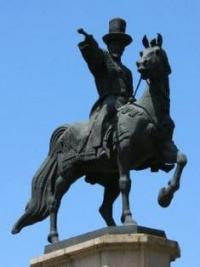
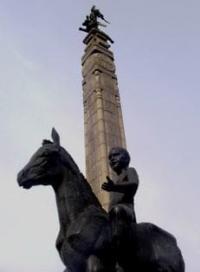
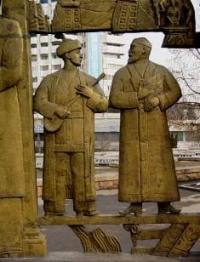
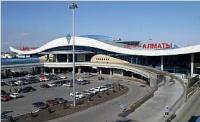
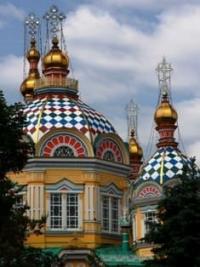
Tours in Almaty.
"We'll be back wherever we go,
otherwise fate - for scrap.
Everything is connected with this city.
long and tight knot.
From roofs to asphalt are blown,
here the streets are protected
not our best moments
and the best of minutes.
Asya Veksler.
Tourist attractions of Almaty. Video film: Al-Farabi Avenue in Almaty.
Climate of Almaty.
Сlimate is continental. The maximum temperature in summer is 43.4 degrees (1983). Frosts usually begin on October 14 and end on April 18. The coldest month of the year is January, the hottest is July. The average temperature in summer is 21 degrees C, in winter 8 degrees C. January - 7 degrees C, February - 6 degrees C, March + 2 degrees C, April + 10 degrees C, May + 16 degrees C, June + 21 degrees C, July + 23 degrees C, August + 22 degrees C, September + 17 degrees C, October + 10 degrees C, November + 0.1 degrees C, December - 5 degrees C, January - 5 degrees C. The average snow cover date is April 2, latest May 12th. Almaty is simultaneously located in different climatic zones - from continental to subcontinental, close to arctic (in the mountains). The highest point in the vicinity of Almaty is Talgar Peak (H-4973).
Animal world in Almaty. In the vicinity of Almaty, 141 species of birds have been registered (of which 34 are nesting, 57 are wintering, and 88 are migratory).
City of Almaty for more than 70 years - from April 3, 1927 to December 10, 1997 - was the official capital of Kazakhstan. Saying goodbye to the southern capital, the President of Kazakhstan N.A. Nazarbayev said: "The city of Almaty is the golden cradle of Kazakh statehood.
This is the nest from which our independence took off, and Kazakhstan became known to the entire world community." After the decree of the President of the Republic of Kazakhstan “On declaring the city of Akmola the capital of the Republic of Kazakhstan” dated October 20, 1997.
Almaty received the status of a city of republican subordination, and will remain the southern capital of the state, a major republican financial, scientific and cultural center. The residences of the head of state and government are preserved in the city.
The city's economy is dominated by food and light industries. They provide over 70% of the output of an industrial enterprise. The heavy industry of Almaty is represented by several machine-building and repair-mechanical plants.
On December 10, 1995, Almaty lost its capital status. The center of the republic moved to Astana.
First train arrived in Alma-Ata on July 19, 1929. The temporary station was 10 km from the city.
Gas supply in Alma-Ata began in 1958 after the commissioning of the first 185 LPG units. Liquefied gas was delivered from the RSFSR.
Almaty - I. Major railway junction. On July 19, 1929, the first locomotive "E-1441" arrived at the railway station Almaty - I, which was located 9 kilometers from Almaty. On January 25, 1930, at 2:27 am, a test train consisting of 9 freight and 1 passenger cars began operating the “gorvetka” that connected the station Almaty - I and Almaty - II.
Botanical garden in Alma-Ata, founded in 1932.
Pharmacies in Verny. The first pharmacy in Verny was opened in 1884, and the second in 1885.
Illumination of the city of Verny. In December 1874, 33 lanterns were installed on the streets of the city in which stearin candles were lit. In 1914, 7 kerosene lanterns were installed near the governor's house.
Bath "Arasan" in Almaty (warm spring). Water-health complex, which includes oriental, Russian, and Finnish baths. Built in 1979 - 1982
In 1928, the first higher educational institution in Kazakhstan was opened in Almaty - the Pedagogical Institute, which in 1935 was named after Abai. In the 30s. S. Seifullin, U. Dzhandosov, M. Auezov, S. Mukanov, K. Zhubanov and others lectured at the institute.
In the period from 1929 - 1934. veterinary, agricultural, medical institutes, the institute of Soviet construction were opened in Alma-Ata. In 1934, the largest university in the country, the university, KazNU named after. Kirov. Universities of Moscow, Leningrad, Kazan, and Ukraine assisted in the formation of the university.
In 1944, the Academy of Sciences of the Kazakh SSR was organized in Alma-Ata. The population of Alma-Ata on January 1, 1929 was 48,379 people. Further, the population growth was rapid, the construction of new industrial enterprises began at an accelerated pace in the city.
In 1910, the first cinematograph was opened in Verny, in 1912 there were already 3 cinemas in Verny. Since 1894, the "Semirechensk Regional Gazette" has been published in a small circulation since 1894 in Verny, and the annual "Reference Book of the Semirechensk Region" has been published. As of January 1, 1900, there were 4 soap-making, 2 leather, 4 candle-tallow, 4 lard and 2 sheepskin "enterprises" in the city. On each of them one worker.
In May 1919, a regional gathering of akyns took place, in which the folk singer Zhambyl took part.
In 1879, 43 streets in Verny were given names.
In 1931, the construction of a water pipeline began in Alma-Ata.
In 1933, the construction of a sewer began.
In 1981, on December 19, the millionth resident of Almaty, Baurzhan Kadyrsizov, was born in the city. Almaty residents live according to the standard time of the fifth time zone, introduced on July 16, 1930. Almaty time is 54 minutes 12 seconds ahead of specific time and 6 hours ahead of universal time (Greenwich Mean Time)
In 1994 Alma-Ata was renamed Almaty.
Authority:
A small part of the information was used from the book "The City of Verny and the Semirechensk Region" 2009, author A.G. Lukhtanov. Another part of the information was collected from various sources by A. Petrov Encyclopedia "Kazakhstan", 4 volumes, 1989.
Photos by
Alexander Petrov.







